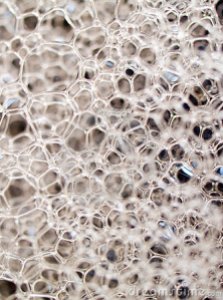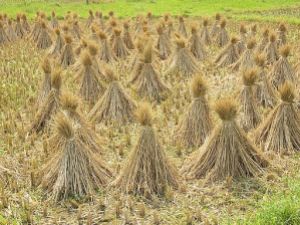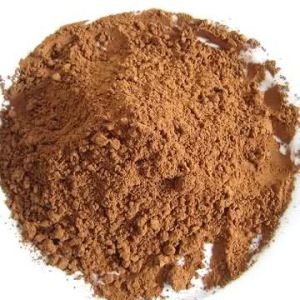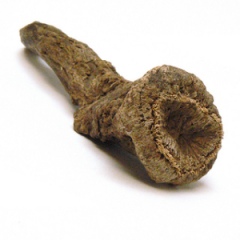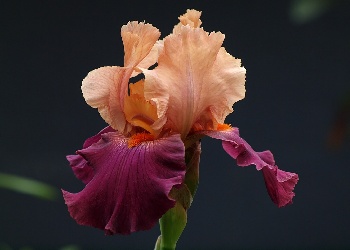Liquid sunshine. Summer citrus in a bottle. A holographic, 3D jewel of orange. A kaleidoscopic burst of every glorious citrus fruit you can imagine, taken from its stem to its green leaves to the very tree itself, bottled in its purest essence. That’s Orange Sanguine, a concentrated eau de cologne from Atelier Cologne and a glorious, affordable scent that will give you whiplash from disbelief at its utterly spectacular opening.
Atelier Cologne is an interesting perfume house. Started in 2010 by founders and romantic partners, Sylvie Ganter and Christophe Cervasel, Atelier is the first fragrance house entirely dedicated to fragrances in the classic cologne formulation. As many perfumistas know, eau de cologne is typically the mildest, weakest form of fragrance, so the creators decided to take it one step beyond. They created a whole new formulation of perfumery called the Cologne Absolue. As the Atelier website explains:
[c]ombining innovative constructions and extremely high concentrations, Cologne Absolue is a cologne of character exalting the magical freshness of cologne coupled with the lasting power of eau de parfum.
In an interesting (and rather sweet) Vanity Fair article on the couple, how they fell in love, and their unique perfume creation, Ms. Ganter explains:
the “cologne absolute” … marries the richness of an eau de parfum with the airy freshness of a citrus cologne.
The secret, Ganter will tell you, is about using a precise concentration of essential oils—each cologne absolute contains a range from 12 to 20 percent—and extracting the best ingredients from around the globe to preserve their intensity and beauty. “We blend familiar notes of vanilla, amber, rose … [but] with fresh citruses, to give them a new and unexpected personality,” Ganter says of her growing scent portfolio, which includes such hits as the bestselling Bois Blonds, a warm blend of Tunisian neroli, Haitian vetiver, and woods; and Orange Sanguine, a sparkling whiff of blood orange, jasmine, and tonka beans, which won a FiFi award (the Oscars of fragrance) last year. [Font emphasis added to the names.]
In 2012, the French FiFi awards gave Orange Sanguine their Experts Award for a fragrance sold in less than 100 stores. It’s quite an achievement for a house that had opened just two years before.
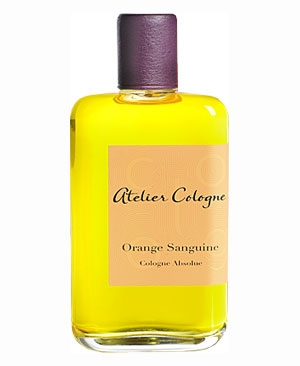 Orange Sanguine was created by perfumer, Ralf Schweiger, who is perhaps best known for his Lipstick Rose for Frederic Malle. (It is an atrocious scent, in my opinion. One of the very few perfumes I had to actually scrub off — and I can put up with a lot!) But Orange Sanguine is a very different matter, indeed. In an interview with CaFleureBon, Mr. Schweiger talked about his inspiration and goal behind the fragrance which is centered more on blood oranges than on the regular variety:
Orange Sanguine was created by perfumer, Ralf Schweiger, who is perhaps best known for his Lipstick Rose for Frederic Malle. (It is an atrocious scent, in my opinion. One of the very few perfumes I had to actually scrub off — and I can put up with a lot!) But Orange Sanguine is a very different matter, indeed. In an interview with CaFleureBon, Mr. Schweiger talked about his inspiration and goal behind the fragrance which is centered more on blood oranges than on the regular variety:
What was your inspiration for Orange Sanguine?
RS: Blood oranges are my favorite citrus fruit! LOVE them! They have this tart green spiciness and their gorgeous bloody color is amazing, not a uniform red when you cut them but this red marble effect… I prefer their taste to regular oranges, especially squeezed for juice.
What does Orange Sanguine conjure up for you?
RS: It is quite literal, my idea of what a blood orange scent should smell like: slightly tart but a little sweet as well, green and a little scratchy… as I described earlier, I have in mind a cut orange with this gorgeous color and pattern to it…
Can you describe the key ingredients of Orange Sanguine and their properties/specificities?
RS: Orange Sanguine is more of a concept and not so ingredient driven. I prefer a combination of bitter orange peel oil amongst others and a choice of specific ingredients to present the sensation of full-bodied tartness. The ingredients used to give the heart and base notes were chosen to help prolongate the freshness over time.
What sets Orange Sanguine apart?
RS: It is an accord made only of orange-type citrus oils without bergamot with its distinct floral character; it is not a classic cologne structure but uses modern style perfumery notes.
Orange Sanguine as an eau de cologne absolue contains 15% concentrated perfume oils (which puts it at the level of some eau de parfums) and contains the following notes:
Top notes : blood orange from Italy, bitter orange from Spain, red mandarin from Italy
Heart notes : jasmine from Egypt, geranium from South Africa, black pepper from Madagascar
Base notes : tonka bean from Brazil, sandalwood from Indonesia, cedarwood from Texas
The very first time I tried Orange Sanguine, I was so stunned that I actually said “Oh My God” out loud. I wrote it in my notes, alongside “WOW! Liquid gold! Sunshine in a bottle!” Orange Sanguine opens with a positive canon-ball explosion of orange that is so zesty, fresh, tart, sour, sweet, zingy, and multi-faceted that you can get whiplash from sniffing your arm. Instead of being unctuously thick, gooey or syrupy, the scent is so fresh and aromatic that it’s almost more like concentrated citruses. But it’s never anything as completely banal as orange pulp. You truly smell the bitter, almost spicy blood orange at its core, along with tart notes that feel like tangerines, the bitterness of the twigs and stem, the greenness that feels like the leaves from the tree, and the pulpy meat of the fruit inside. There is a sharply pungent smell of concentrated citrus oil that feels as if you just took a knife and sliced through the rind of the fruit, squirting its oils in the air.
If you took 15 oranges, rendered them into pulpy juice and tossed in a cup of the grated rinds, you still wouldn’t have this smell. You really wouldn’t. Perhaps if you took a 100 citruses — of every possible variety — condensed into the purest concentrated nectar, then you might have the base. But, again, that alone still would not be enough to encapsulate Orange Sanguine. The slightly bitter woodiness of the twigs and stems, the aromatic fragrances of fresh, waxy green leaves, and the perfect balance between sweet and sour, tart and tangy would also have follow. Orange Sanguine manages all that, and more. As the moments pass, even further layers seem to be added. I could detect notes that smelled much like sour, tart white grapefruit and — in a throwback to my old home in Montecito which had tons of the trees — even the fragrant, tangy kumquats that I used to eat by the bucketful. Then, 15 minutes in, the geranium appears, adding even further to the visual of green leaves nestling a glowing, ruby and orange gold compilation of fruit. The geranium adds a light piquancy and spicy bitterness that feels much more like the fuzzy green of the leaves than just the aroma of the flower.
The whole thing is so photo-realistic, it feels like a hologram. A dazzling display of citruses that are so fresh, it simultaneously feels as though they’re hanging straight off the tree and warmed by the sun but, also, as if they’ve been chilled in the fridge, dappled with condensation. Cool and crisp, Orange Sanguine never feels leaden, thick, syrupy or heavy. It’s almost bewildering how Ralf Schweiger made something that feels so concentrated be so incredibly airy and almost aquatic in nature. Honestly, I can’t say it enough: Orange Sanguine’s opening is truly a masterpiece, an olfactory achievement of breathtaking magnitude in those early moments.
I tried Orange Sanguine three times and, on one of those occasions, the glorious opening shifted into something a little rockier. On my second test, in order to assess longevity issues, I put on a larger dose — the dabbed equivalent of two medium-to-large sprays. And, less than 20 minutes in Orange Sanguine’s development, I got a blast of soap that was so extreme, I felt as if I’d been doused in suds. I’m not a fan of soapiness, and this was a huge amount! Perhaps even worse was a similar large blast of something so synthetic that it burned my nose. I was not happy in the slightest, especially as the synthetic note lasted for over an hour, and the soapiness even longer still. In fact, the perfume turned into something very much like geranium soap over an amorphous, slightly synthetic, generalized “woody” base. It wasn’t sandalwood in any distinct form; instead, it was just some sort of vague creamy, beige base.
However, on my first and third test, I used much less of the fragrance and had a slightly different outcome. There was no synthetic burst or burning of the nose. Soapiness was still an issue, however, on each occasion starting between the 20 to 30 minute marks. It wasn’t as hugely overwhelming as that one time and, though I absolutely despise “soapy, clean” fragrances, it was significantly more manageable. Still, there is no doubt that Orange Sanguine’s glorious opening does eventually turn in every instance into something very reminiscent of the most expensive, luxury French soaps. It’s geranium-citrus soap to my nose with, sadly, much of that photo-realistic, concentrated citrus nectar fading from its spectacular, dizzying heights and turning into something much more amorphous, vague and generalized. There is also a creamy base to the notes that starts to become more apparent with time. It’s never anything distinct like jasmine, vanilla or sandalwood, but, rather, something just can only be (poorly) described as “creamy.” The edges of the perfume have become softer, the scent feels richer and fuller, though it’s still an airy fragrance in terms of weight.
Orange Sanguine continues as geranium-citrus soap for several hours. The base feels like some sort of vague impression of gauzy beigeness. Eventually, during its final stage, the perfume turns into some abstract notion of orange muskiness, and that’s about it. There really isn’t a whole lot to the perfume.
Some people have talked about how Orange Sanguine is an orange fragrance mired in a wonderful, creamy sandalwood base. Others think that the base is ambered. I don’t think so — for either note. I truly don’t. At best, perhaps you can say that Orange Sanguine has “sandalwood” in its most synthetic, abstract, amorphous, artificial form. But, honestly, to my nose, there is no sandalwood, even in a synthetic form. And the same goes for the amber or any vanilla note. Whatever the synthetic base, the impression to me is just of vague, indefinite, indistinct, creamy, beige… something. In its very final moments, Orange Sanguine is simply some abstract orange muskiness. In fairness, it’s not supposed to be much more than an orange fragrance from start to finish — the interview with the perfumer, Ralf Schweiger, underscores that point. Nonetheless, Orange Sanguine isn’t a complicated, morphing, heavily nuanced scent beyond the citruses (geranium and soap).
There is massive, gushing, overwhelming love for Orange Sanguine — by men and women alike — but there are some minor dissenters, too. In a nutshell, the few complaints on sites like Fragrantica, MakeupAlley, or Luckyscent can be summed up as follows: 1) it’s an orange bomb; 2) it’s overly sweet (with one person finding it too bitter); and 3) it’s synthetic (someone on Luckyscent wrote: “smells more like my orange-glo spray cleaners after 20-mins. Too synthetic.”). On Fragrantica, those people who noted the soapy aspect or the synthetic element in the first hour didn’t seem particularly bothered by it. On Luckyscent, the issue of sweetness seemed to be a far greater problem, while on MakeupAlley, there were some minor comments about both soapiness and longevity.
Honestly, I think all of those points are valid and worth consideration. Orange Sanguine is not a fragrance for those who prefer their orange notes mixed with a variety of different elements; it is an orange bomb and it is largely linear. It also has soapiness — a great deal of it, in fact, if you spray on a large quantity — and that will be a deal-breaker for some, while others may adore the “clean” aspect that the soap imparts. Orange Sanguine may also be far too sweet for some, while too bitter for those who don’t like blood oranges (this was actually raised as an issue by one or two people who seem to hate that variety of orange). And, it does have a synthetic aspect that becomes more noticeable if you spray on a lot of it.
It’s also a fragrance that may have problematic longevity for a number of people. I’ve read a number of comments about how Orange Sanguine only lasts a short time (between 3-5 hours). On me, with my voracious, perfume-consuming skin, I was actually surprised to get between 6 and 7.5 hours, consistently, depending on quantity and amount. I know one blogger who initially thought Orange Sanguine’s longevity to be its only defect but who subsequently noted that the perfume did, in fact, stay on for a surprising length of time.
Yet, despite all those issues, I found myself fascinated by Orange Sanguine and it is a fragrance that I would wholeheartedly recommend for a test sniff at the very least. For one thing, that opening is truly stunning. If ever you’ve struggled to get out of bed on a Monday morning, I think Orange Sanguine would be the answer. For another thing, my God, is it affordable for niche perfumery! The perfume comes in three sizes: from the very practical 1 oz/30 ml, to a large 3.3 oz/100 ml, to a super-sized, monstrously huge 6.7 oz/200 ml bottle. The prices are, respectively: $60, $95 or $155; €39 for the 30 ml small; or €90 or £75.00 for the large 100 ml. (Orange Sanguine is also widely available and is even sold at Sephora!) If you have longevity issues, you can buy the gigantic 200 ml bottle for $155 or £95.00 which comes to very little per ounce and can therefore splash away with reckless abandon. (In U.S. currency, the 6.7 oz bottle breaks down to approximately $23 an ounce, while the 3.3 oz bottle ends up being $47 an ounce — both are better deals, per ounce, than the $60 bottle which is 1 oz/30 ml.) Plus, if you order the large 6.7 oz bottle from the Atelier website, they will throw in the 1 oz/30 ml “travel” bottle for free, along with a leather pouch engraved with your initials. Granted, I know few people could possibly go through a 6.7 oz bottle of any perfume, but Orange Sanguine does engender incredible passion in some. In fact, one of my best friends in Denmark has worn Orange Sanguine obsessively every day for months and can’t stop raving about it. He had contemplated buying Frederic Malle‘s Bigarade Concentrée, but opted instead for Orange Sanguine. It has now become his signature scent, and I have no doubt that he could easily finish one of the mammoth bottles in a year or two.
All of that brings me to a few other points. Yesterday, I reviewed another well-known orange-citrus fragrance: Malle’s Bigarade Concentrée. It was a scent which engendered incredible apathy; I didn’t even find it interesting enough to hate it — despite reeking of cumin-inspired stale sweat and armpits on me, and despite having utterly atrocious sillage (with barely better longevity). But I want to explicitly state that the two perfumes have nothing in common beyond the use of an orange note. They are fundamentally different, with the Malle being a drier, orange-woody-cumin fragrance and Orange Sanguine being a photo-realistic citrus with geranium and soap. Also, whatever my problems with Orange Sanguine’s synthetic element and soapiness, I still would take it over the Malle — any day, hands down. In fact, it is a testament to Orange Sanguine that I actually pondered the extent to which I hate soapy scents, if I could get over it, and if the low cost would make it worth considering a bottle. The opening is really that fantastic!
Lastly, Orange Sanguine is an incredibly easy, uncomplicated, versatile fragrance that both men and women could wear. It’s also one of those things that would work well for the office as well, as its sillage is far from monstrous. In fact, I found the fragrance to drop in projection after the first hour and it stayed just an inch or two above the skin. It certainly won’t be something that perfume-phobes should object to; as one person on Fragrantica wrote, “[i]t’s the sort of thing that causes people who profess to dislike perfume to perk up and say, ‘Something smells good!'”
In short, if you like citrus scents or are looking for something fresh, zingy and zesty for summer, then you should give Orange Sanguine a sniff. Perhaps it will be too much for you, due to some of the problems I’ve noted, but it is a perfume that is truly worth exploring. And, if you fall in love with it, I have no doubt Orange Sanguine will become a summer mainstay. What an opening. What a truly spectacular opening!





